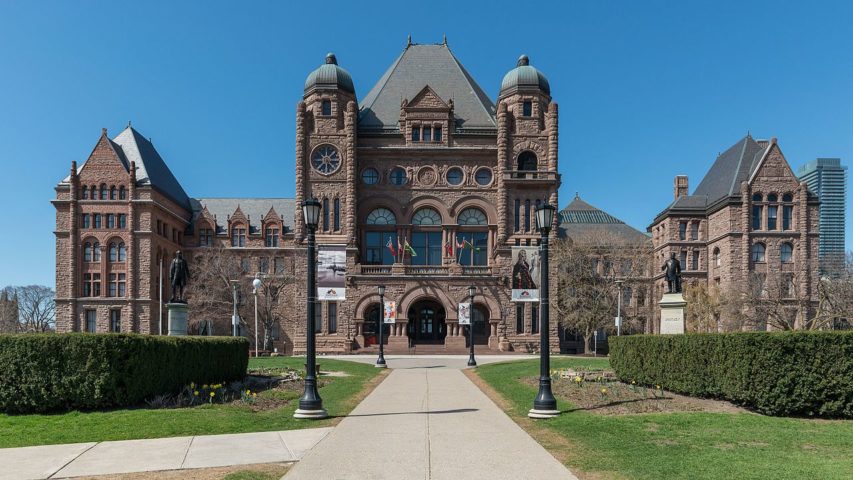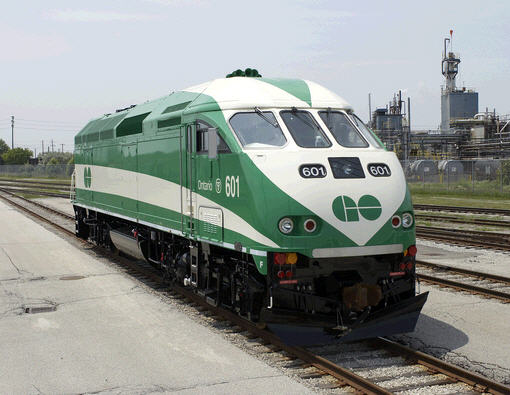Chris Selley discusses the weak-but-barely-plausible high speed train plans announced by the Ontario government the other day:
High-speed rail is expensive — to build, certainly, and more on that shortly, but just as importantly to ride. It’s 202 kilometres from Le Mans to Gare Montparnasse in Paris. The first TGV of the morning takes 58 minutes — total average speed, 208 km/h — and will set you back €45. It’s 180 kilometres from Frankfurt’s Hauptbanhof to Cologne’s Hauptbanhof. The 7:27 a.m. ICE train takes 65 minutes — average speed: 167 km/h — and Deutsche Bahn wants €60 for the privilege. Brussels to Amsterdam’s Schiphol Airport is 195 kilometres. The Thalys will get you there in 92 minutes tomorrow morning, at a relatively modest average speed of 127 km/h and for the eye-watering sum of €82.
This is the sort of distance Ontario’s Liberal government says it plans to cover with high-speed rail — from Union Station in Toronto to London via Pearson Airport, Guelph and Kitchener-Waterloo. A report and “preliminary business case” by former federal transport minister David Collenette, released Friday, envisions 185 kilometres of track with a maximum speed of 300 km/h in one scenario and 250 km/h in the other, and by 2025.
The London-to-Toronto trip would take 66 minutes in the faster scenario and 73 in the slower, for a total average speed of between 152 and 168 km/h. Either would represent genuine high-speed rail, and it would come at genuine high-speed rail prices: somewhere between $4 billion and $11 billion under the 250 km/h scenario; somewhere between $15 billion and $44 billion at 300 km/h.
[…]
So it’s a bit of a conundrum for the Liberals. This is a big offer — just the sort of thing people in the GTA say they want when they come back from Cologne, Paris and Amsterdam. It ought to be a reasonably compelling plank of an election platform.
But many Ontarians wouldn’t trust the Liberals to see an HO-scale model of this plan to fruition on time or on budget. It’s vulnerable to the sort of grievance-mongering and populism that sometimes makes it hard to tell a New Democrat from a Tory these days. We haven’t even gotten into the technical details. And ultimately, I’m just not really convinced people want this to happen as much as they say they do — not unless it’s free, and stops just the right distance from their back yards.
On the technical details, here’s a very brief overview from a post I wrote several years back, at the time California was beginning their insane high speed rail project:
The best place to build a high speed rail system for the US would be the Boston-New York-Washington corridor (aka “Bosnywash”, for the assumed urban agglomeration that would occur as the cities reach toward one another). It has the necessary population density to potentially turn an HSR system into a practical, possibly even profitable, part of the transportation solution. The problem is that without an enormous eminent domain land-grab to cheat every land-owner of the fair value of their property, it just can’t be done. Buying enough contiguous sections of land to connect these cities would be so expensive that scrapping and replacing the entire navy every year would be a bargain in comparison.
The American railway system is built around freight: passenger traffic is a tiny sliver of the whole picture. Ordinary passenger trains cause traffic and scheduling difficulties because they travel at higher speeds, but require more frequent stops than freight trains, and their schedules have to be adjusted to passenger needs (passenger traffic peaks early to mid-morning and early to mid-evening). The frequency of passenger trains can “crowd out” the freight traffic the railway actually earns money on.
Most railway companies prefer to avoid having the complications of carrying passengers at all — that’s why Amtrak (and VIA Rail in Canada) was set up in the first place, to take the burden of money-losing passenger services off the shoulders of deeply indebted railways. Even after the new entity lopped off huge numbers of passenger trains from its schedule, it couldn’t turn a profit on the scaled-down services it was offering.
Ordinary passenger trains can, at a stretch, share rail with freight traffic, but high speed trains cannot. At higher speeds, the actual construction of the track has to change to deal with the physical problem of safely guiding the fast passenger trains along the rail. Signalling must also change to suit the far-higher speeds — and the matching far-longer safe braking distances. High speed rail lines cannot be interrupted with grade crossings, for the safety of passengers and bystanders, so additional bridges and tunnels must be built to avoid bringing road vehicles and pedestrians too close to the trains.
In other words, a high speed railway line is far from being just a faster version of what we already have: it would have to be built separately, to much higher standards of construction.







